Creating a Stacked Area Chart: Visualizing U.S. Migration Trends

What is stacked area chart
A staked area chart is a type of data visualization that displays multiple categories of data on a common axis. Each category is depicted as a colored area, and the areas are stacked on top of each other. As a result, you can see how the composition of the data evolves over time.
Using a stacked area chart, you can show how different categories contribute to the whole and how the composition evolves. In addition, you can display trends over time.
The combined height of all the stacked segments at any given point of the chart represents the total value of the data for that time period. That's why a stacked area chart allows you to provide a clear representation of the total magnitude.
Note that the stacked area chart can only accommodate nonnegative (positive) values. You can't use it to display datasets with missing values or gaps.
Steps to creating a stacked area chart
To begin creating a stacked area chart, the first thing you need to do is log in to your account and enter your dashboard. Then, hit the 'New chart' button. This will take you to the template list. Choose 'Stacked Area Chart' under the category of 'Line and Area Charts.'
Notice that we have two stacked area charts: one is a standard stacked area chart, while the other has been uniquely tailored to represent values as percentages.
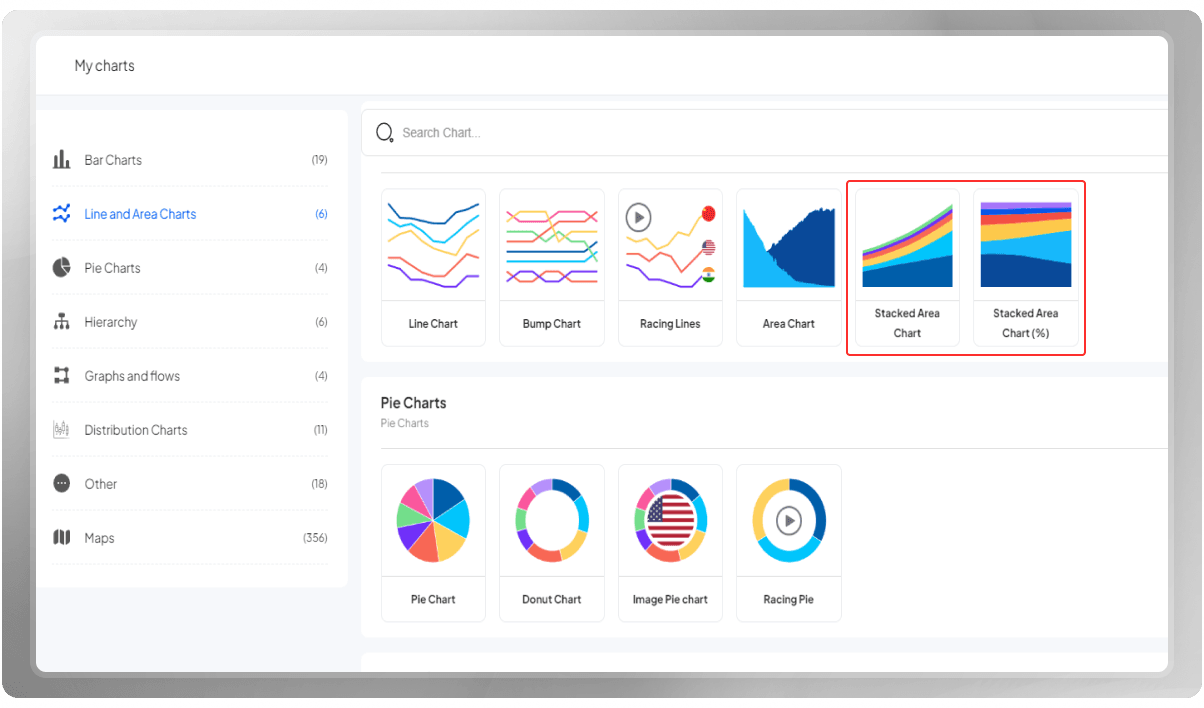
Now, set a title for the project, customize the dimension of the template to a scale you are more comfortable with, and hit 'Change data' to implement your data into the chart.
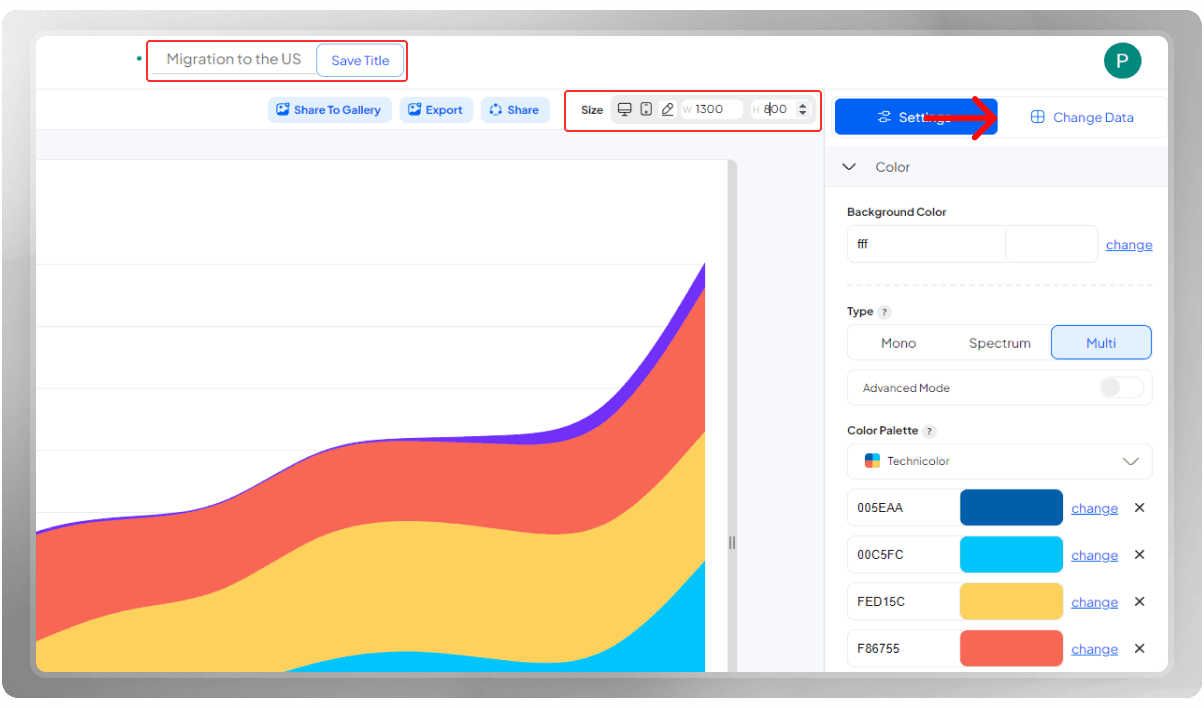
There are 3 ways to insert your data:
- Upload a CSV file,
- Import data from Google Sheets,
- Or insert data manually.
If you're uploading a CSV file, just hit 'Upload' and then choose the file you have in mind from your PC. Make sure that the rights columns have been assigned for labels and values.
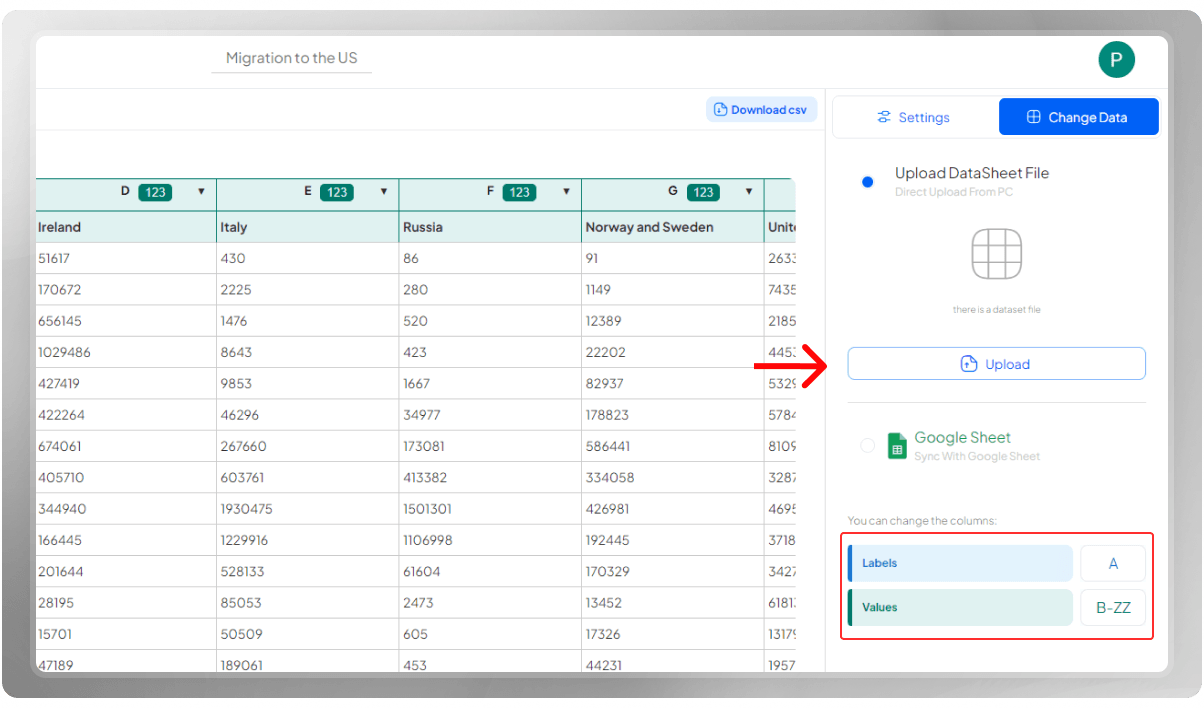
In addition, you should keep in mind that you can change the format of dates and numbers here in the data center.

You can choose from the palettes we've prepared for you or make your own color palette.
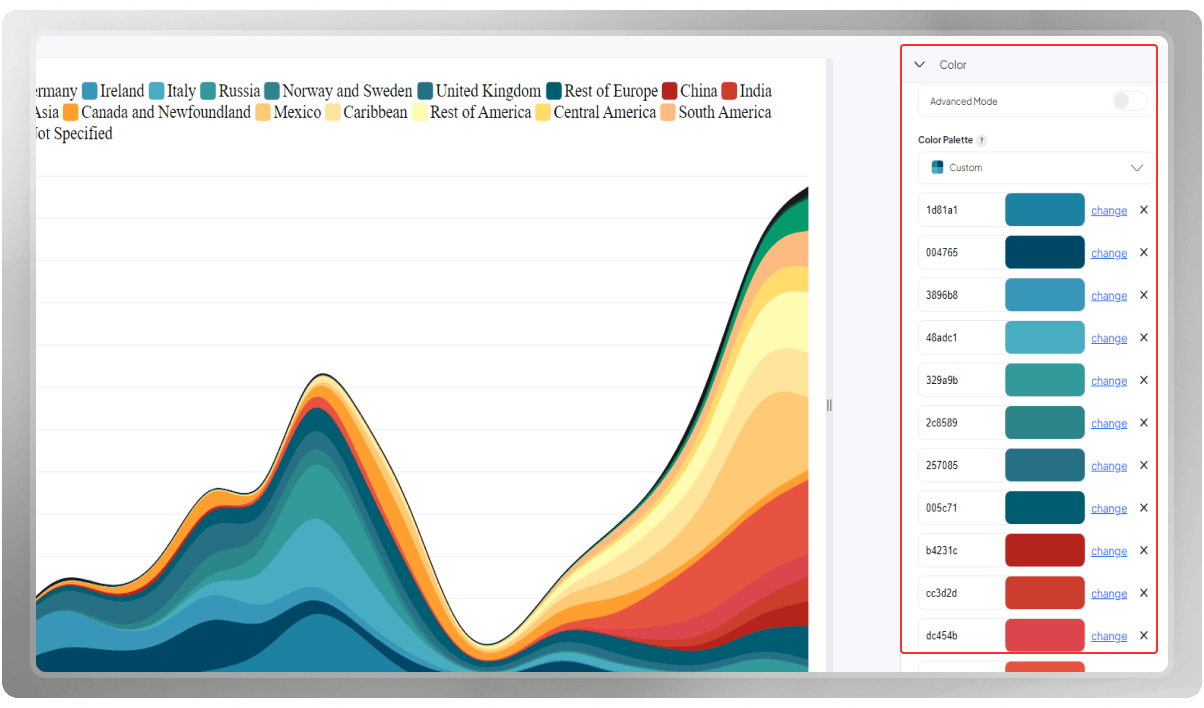
The header is an essential section of your visualization because it showcases the primary subject it represents. A meaningful title can make a strong connection in the viewer's mind, enabling you to convey your message effectively.
Make sure to customize customize the font, size, and color. If you wish to include extra details, consider adding a subtitle or note to this section. Personalizing these elements will enhance the impact of your visualization and captivate your audience.
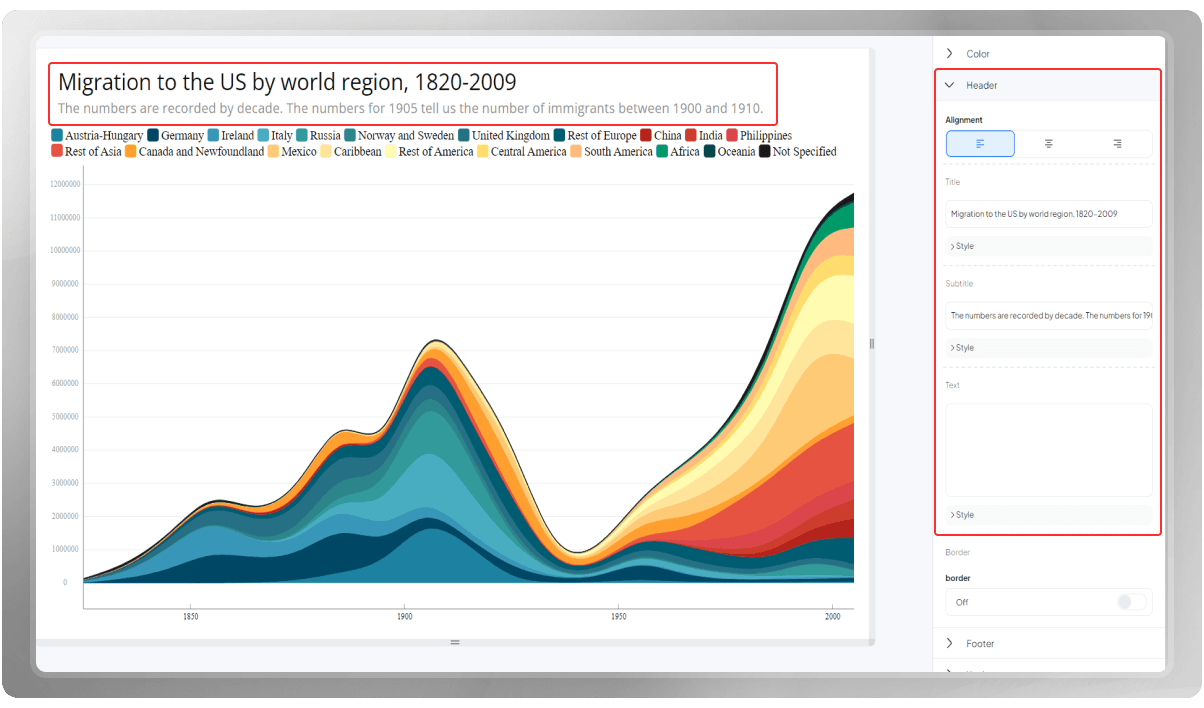
In the X-axis section, you can customize the font, size, and color of the labels. Pay attention to the sampling, which is the parameter to determine the number of labels appearing over the axis. The same customization process goes for the Y-axis as well.
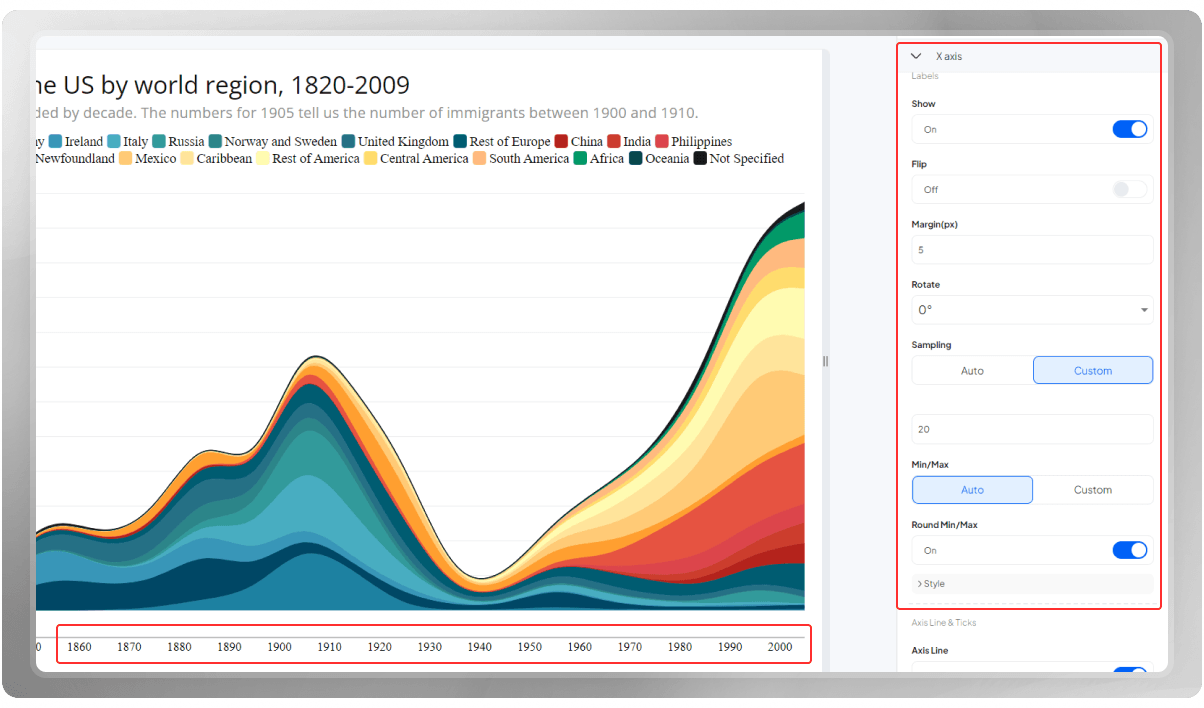
A number formatter is a tool that enables you to customize the appearance of numerical data according to your preferences. It offers various settings that enable you to specify the desired number of decimal places, select a particular currency symbol, establish separators for thousands or millions, and configure the format for presenting percentages or scientific notation.
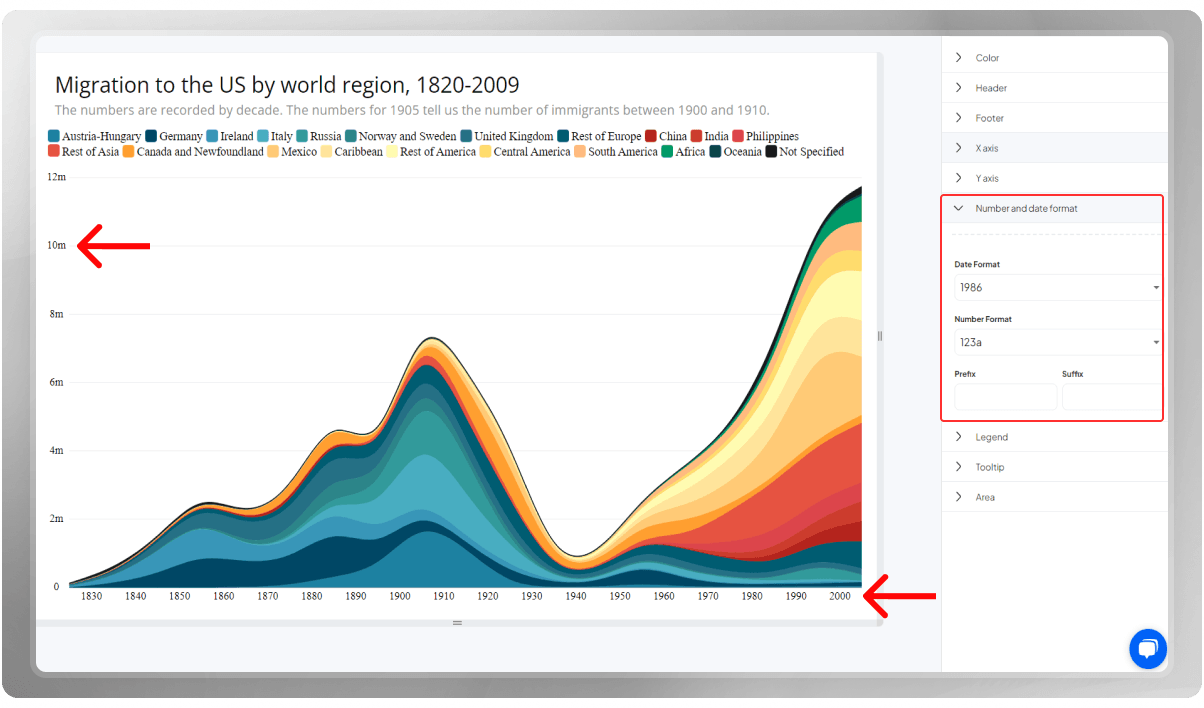
In charts, legends typically consist of labels and corresponding symbols or colors that represent different data series, categories, or groups. Legends help viewers understand the information being presented and provide context to the data.
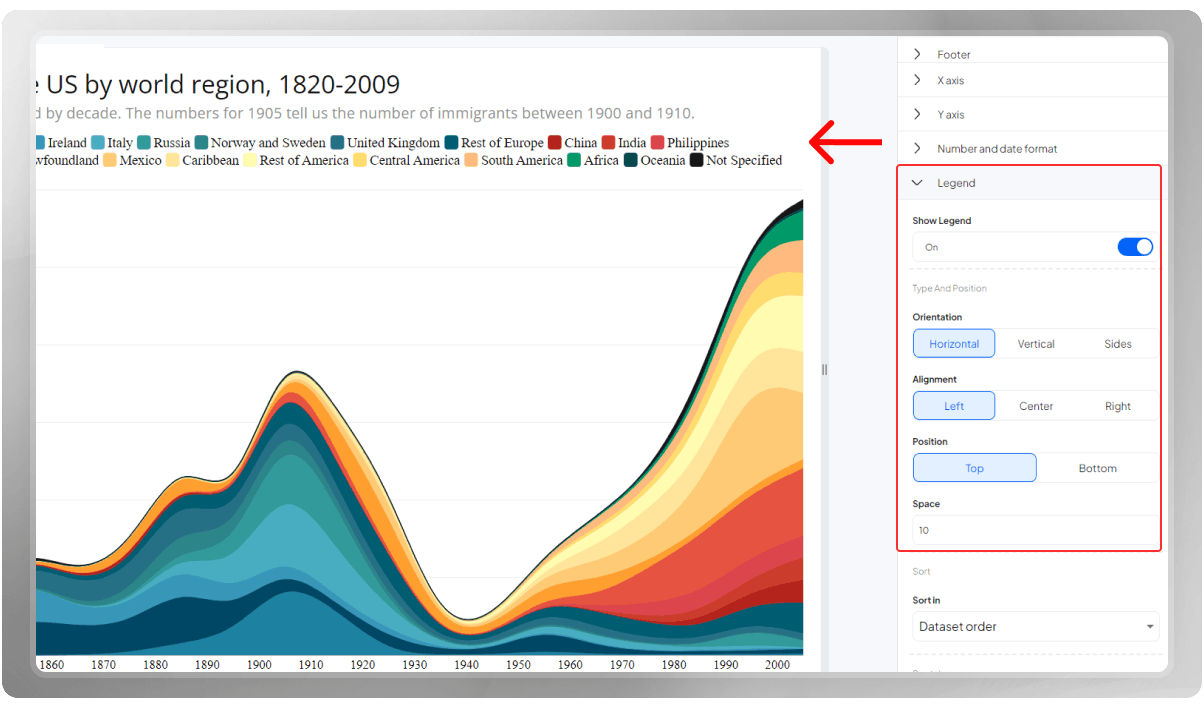
In the Area section, you can customize the opacity and type of the area representing your data and add borders to them. The following is the list of different types of areas you can adopt in the PlotSet panel:
Curve Linear
This type of area uses straight lines to connect the data points, creating a polygonal shape. Curve linear areas are suitable for representing data when you want a clear, step-like progression between data points.
Curve Basis
Curve basis areas use a basis spline algorithm to create a smooth curve that connects the data points. This option provides a more visually pleasing and smooth representation of the data.
Curve Step
Curve step areas connect data points with horizontal and vertical line segments, creating a staircase-like appearance. It's particularly useful when you want to highlight discrete intervals or steps in your data.
Curve Step Before
Similar to the curve step, this type connects data points with horizontal and vertical lines, but the lines start from the data point before the step. This can be helpful when you want to emphasize the value before a change or transition.
Curve Step After
Again, similar to the curve step, this type connects data points with lines, but the lines start from the data point after the step. This can help highlight the value after a change or transition.
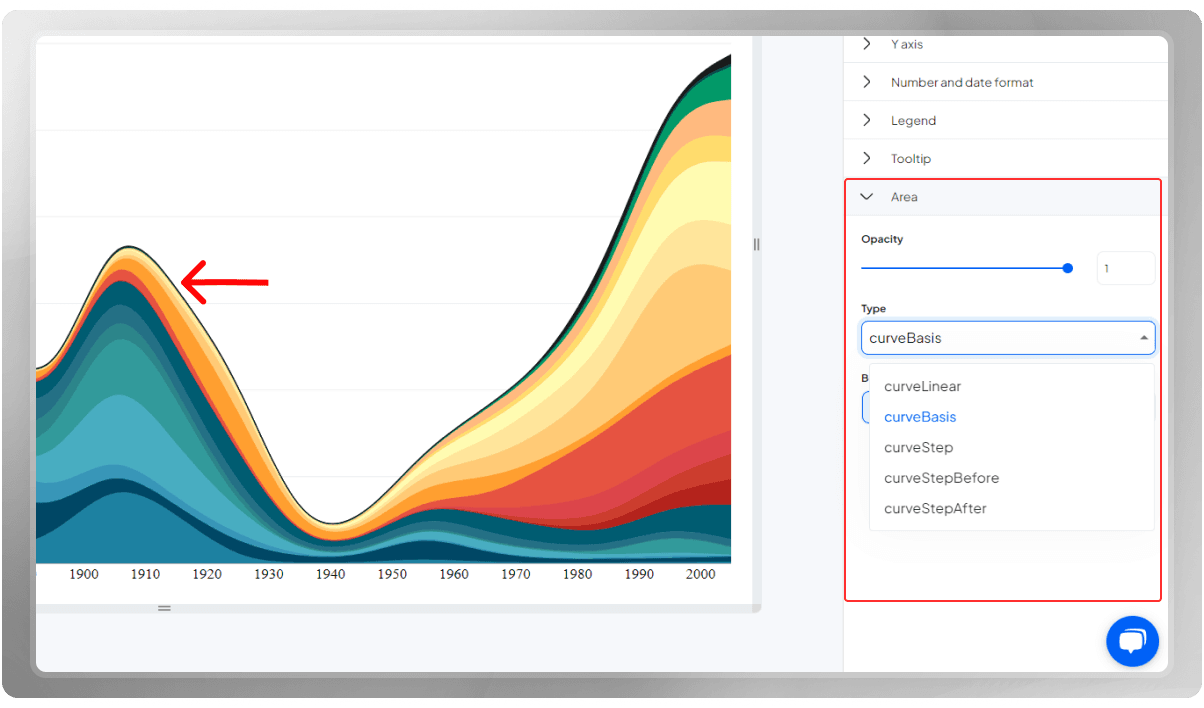
You have the option to export the final design in PNG, SVG, or JPG format. You can also share your design with others, embed it on your website, or share it on social media.
Visualize your data with PlotSet!
